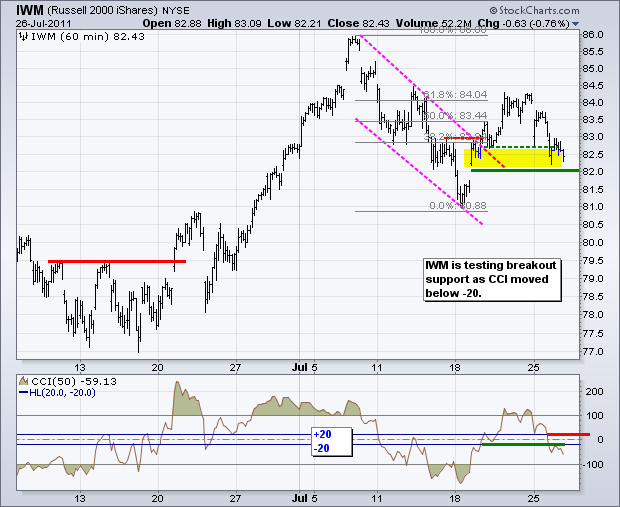Relative weakness in small-caps remains a concern for the stock market. While the Nasdaq 100 ETF
(QQQ) is holding up fine, the Russell 2000 ETF (IWM) is already in its support zone with declines over the
last two days. The first chart shows IWM gapping down on Monday. This gap remains unfilled as the ETF
continued lower on Tuesday. IWM is currently right in the support zone for the first test of the breakout.
CCI moved below -20 to turn short-term momentum bearish.
area. The decline in SPY looks like a normal overbought consolidation or pullback. SPY is also setting up
for its first test with minor support around 133 and the Percent Price Oscillator (PPO) hitting the zero line.
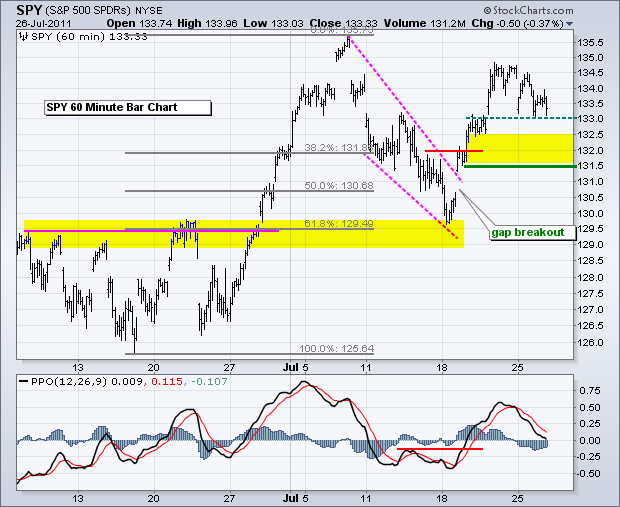
Thanks to Apple, Google, Microsoft and a few others, QQQ continues to trade on another planet. The ETF
moved above its early July high and held above its this week. Selling pressure is simply none-existent.
Broken resistance and the June trendline combine to mark a support zone in the 58-58.50 area.
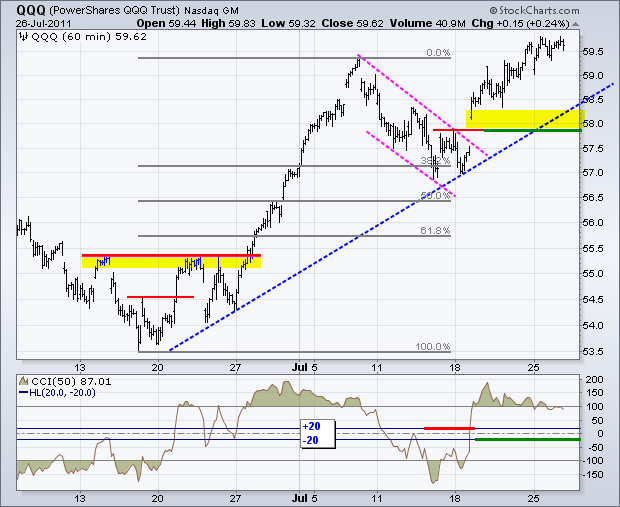
Despite the debt ceiling debacle, the 20+ year Bond ETF (TLT) continues to hold support in the 95 area.
The bond market has already priced in a last minute deal. Moreover, the bond market is quite aware of
the US debt situation. There is not much new news here. With all the spikes over the last few weeks, it
is difficult to pinpoint the upper trendline of a falling wedge. In any case, a wedge is apparent over the
last 2-3 weeks with resistance around 96.25. A break above this level would reverse the short-term
downtrend in TLT. Also notice the inverse relationship between TLT and the Euro over the last five weeks.
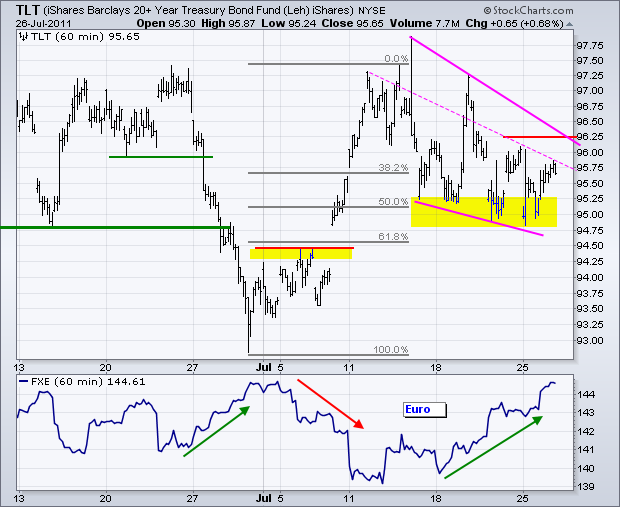
With another hit on Tuesday, the US Dollar Fund (UUP) is getting oversold and ripe for a bounce or
consolidation. I am going to lower resistance to the 21.20-21.25 area. Broken supports and Friday's
reaction high combine to mark resistance here.
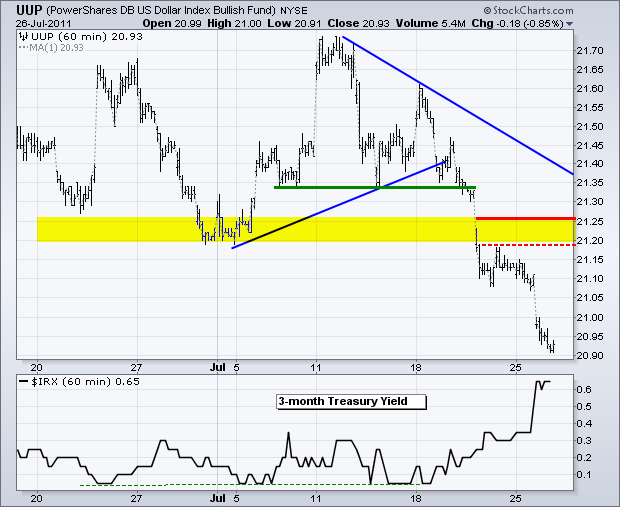
Weakness in the Dollar is positive for oil, but weakness in the stock market is negative. Overall, the
12-Month US Oil Fund (USL) remains in an uptrend with a rising wedge taking shape. The lows of the last
few days and the lower trendline mark first support at 44.50. A break below this level would be the first
sign of weakness. Key support remains in the 43.25 area.
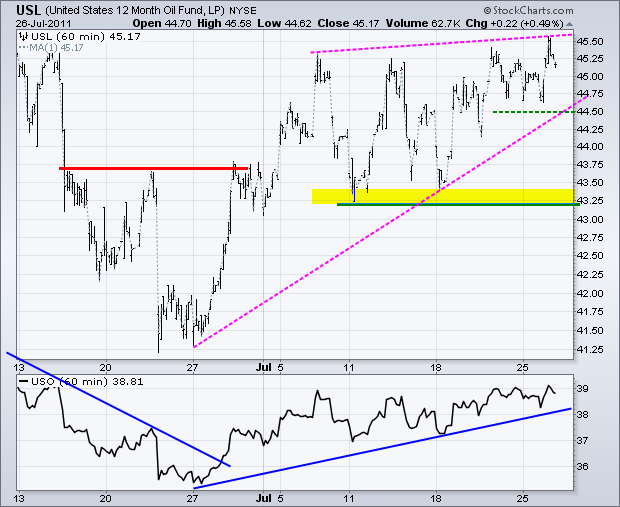
There is no change in the Gold SPDR (GLD). The ETF broke triangle resistance and continues to hold this
breakout. Broken resistance turns first support in the 156 area. Last week's lows mark the key support
zone in the 154 area.
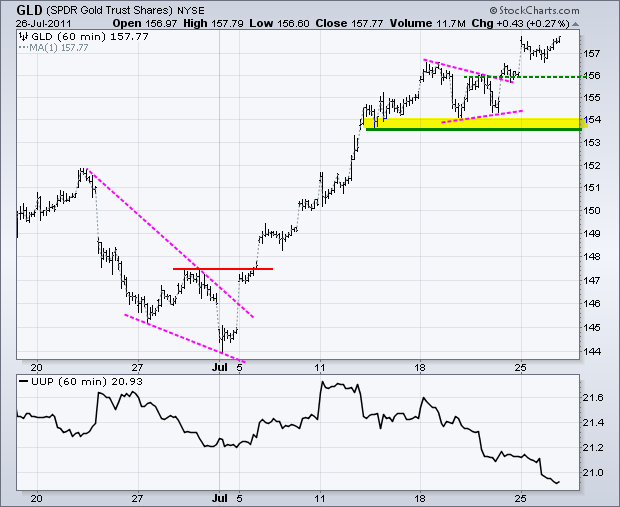
Key Economic Reports:
Wed - Jul 27 - 07:00 - MBA Mortgage Index
Wed - Jul 27 - 08:30 - Durable Goods Orders
Wed - Jul 27 - 10:30 - Oil Inventories
Wed - Jul 27 - 14:00 - Fed Beige Book
Thu - Jul 28 - 08:30 - Jobless Claims
Fri - Jul 29 - 08:30 - GDP
Fri - Jul 29 - 09:45 - Chicago Purchasing Managers Index (PMI)
Fri - Jul 29 - 09:55 - Michigan Sentiment
Charts of Interest: Tuesday and Thursday in separate post.
This commentary and charts-of-interest are designed to stimulate thinking. This analysis is
not a recommendation to buy, sell, hold or sell short any security (stock ETF or otherwise).
We all need to think for ourselves when it comes to trading our own accounts. First, it is the
only way to really learn. Second, we are the only ones responsible for our decisions. Think of
these charts as food for further analysis. Before making a trade, it is important to have a
plan. Plan the trade and trade the plan. Among other things, this includes setting a trigger
level, a target area and a stop-loss level. It is also important to plan for three possible price
movements: advance, decline or sideways. Have a plan for all three scenarios BEFORE
making the trade. Consider possible holding times. And finally, look at overall market
conditions and sector/industry performance.

